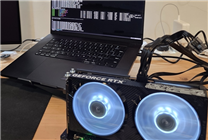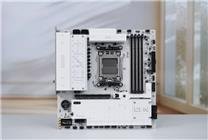Summary:
- TinyCorp enables NVIDIA RTX 30, 40, and 50 series graphics cards to work with MacBooks using USB4/Thunderbolt 4.
- The new drivers are tailored for AI development, lacking display functionality for general use.
- This development may significantly enhance AI development capabilities on MacBook devices.
Revolutionizing AI Capabilities on MacBooks: TinyCorp’s Recent Breakthrough
On October 22, leading tech innovators TinyCorp made headlines with a groundbreaking advancement in enabling NVIDIA graphics cards to be utilized with Arm-based MacBooks. Following their successful integration of AMD graphics cards, this latest development focuses on allows users to deploy NVIDIA’s RTX 30, 40, and 50 series graphics cards via an external GPU docking station using the USB4/Thunderbolt 4 interface.
However, potential users should temper their enthusiasm. While the drivers function seamlessly for AI development, the current iteration does not support display output on MacBooks. This limitation restricts users who anticipated enhanced gaming or graphics performance from their devices.
Supporting this endeavor, TinyCorp showcased impressive visuals of a MacBook Pro M3 Max utilizing Tinygrad with an RTX GPU connected through USB4 to an ADT-UT3G docking station. This image illustrates the promising potential that exists for high-performance graphics on MacBooks, specifically catered to AI applications.
The newly developed driver accommodates NVIDIA’s RTX 30, 40, and 50 series graphics cards. However, potential users of the RTX 20 series should prepare for additional setup efforts, as those cards may require specific configurations. It’s noteworthy that GTX series graphics cards are not supported at this time.
Apple’s transition from Intel processors to its proprietary Arm architecture M series chips has played a pivotal role in shaping this landscape. As a result, the company no longer requires native support for NVIDIA or AMD drivers in macOS, given the robust integrated GPU (iGPU) capabilities of the M series MacBooks. This shift has led developers and users to undertake the task of manually constructing drivers to facilitate the use of NVIDIA and AMD graphics cards on macOS through external GPU docks.
For AI developers, this innovation holds significant implications. It empowers users to leverage powerful graphics cards, such as the RTX 5090, for enhanced processing capabilities, allowing local large language models (LLMs) and other AI frameworks to run more efficiently than ever before on Apple’s hardware.
As the tech industry pivots towards more specialized applications of artificial intelligence, TinyCorp’s breakthroughs offer a promising glimpse into the potential for optimizing performance on MacBook devices. This development not only expands the capabilities of MacBooks for AI tasks but also demonstrates how innovative thinking can bridge the gap between hardware limitations and ambitious technological goals.
As the landscape of computing evolves, staying abreast of advancements such as these will be crucial for developers looking to maximize their workflows. Through enhancing MacBook functionality with high-performance GPUs, TinyCorp is not just making headlines—they are paving the way for the future of artificial intelligence on consumer devices.






